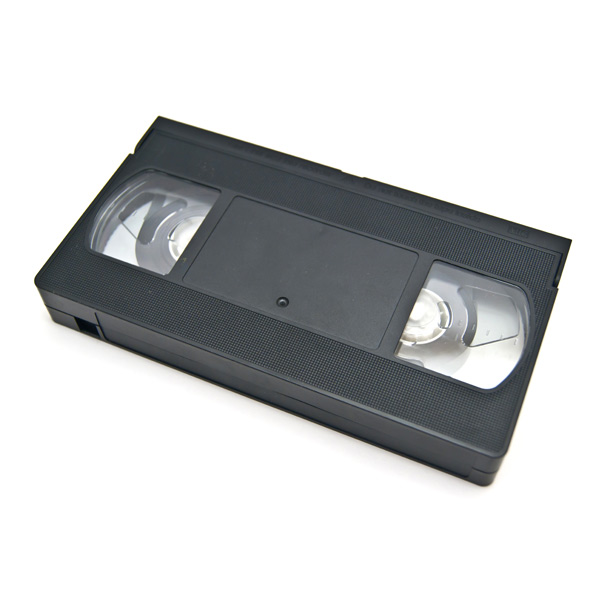RIP VHS and Audio Cassette Tapes
For years a pile of VHS videocassettes sat on top of my office bookshelf in a stack that nearly reached to the ceiling. They were dubs of my old Ampex shows, episodes of Nova that I actually bought, things I taped off the air, and other odds and ends given to me. The thinking was that I’d hang on to these relics forever as cherished links to my past.
It was a bit of a shock when I discovered that none of these tapes would actually play in my home VCR. Either the tapes had degraded over the past 20 years or the VCR had developed some sort of technical malady that caused it to spit out tapes after a few seconds of agonizing sounds. What I realized, finally, was that none of these tapes mattered much to me anymore. With YouTube and all the other on-line sources, I still had access to much of their content, so I wasn’t really losing anything. I also discovered that I had a set of Beta-SP dubs of my Ampex shows that were much better for digitizing than VHS, so that material could be archived and eventually posted to my YouTube channel.
So, the time had come to ditch the tapes, but conscientious me discovered this was no simple matter. Goodwill and similar charities won’t take VHS cassettes, as is the case with the semi-annual e-waste roundups sponsored by Recology, our local trash and recycling company. Simply throwing the tapes away in the trash was not a solution I could live with. The cassette shells would take over 1000 years to decay in a landfill while the toxic metal ingredients in the tape itself would quickly leech into the soil and pollute. There’s no way I could do that with a clear conscience.
Therefore, what to do with about 100 VHS tapes and an equal number of audio cassettes that I also decided I could live without? A little online investigation work led me to greencitizen.com where I learned of their clean, environmentally sound disposal methods for VHS cassettes, audio cassettes, and other forms of obsolete magnetic media. (They burn them up in a very high temperature incinerator that generates usable electricity.) The only catch is that one must pay for the service at a rate of $1 per pound of waste.
I thought it over for a few moments and decided that that was the only solution I could live with. So, I loaded up the car and drove over to the nearest Green Citizen recycling and disposal center, which was luckily close to my San Mateo home. It turns out I had 70 pounds of tapes that translated to $70 in disposal fees. Not exactly cheap for throwing things away but I felt much better that I went ahead and spent the money to do the environmentally right thing.
I’m no “green warrior” but I am deeply concerned with climate change and proper disposal of products after their useful life is over. When it comes to video and audio media, it’s now all about online and streaming, and having a closet full of tapes (or discs for that matter) doesn’t feel so necessary anymore. It’s time we retired our unwatched/unlistened to libraries of VHS and audio cassettes in ways that won’t harm the environment. They served us well for many years. RIP. RB
